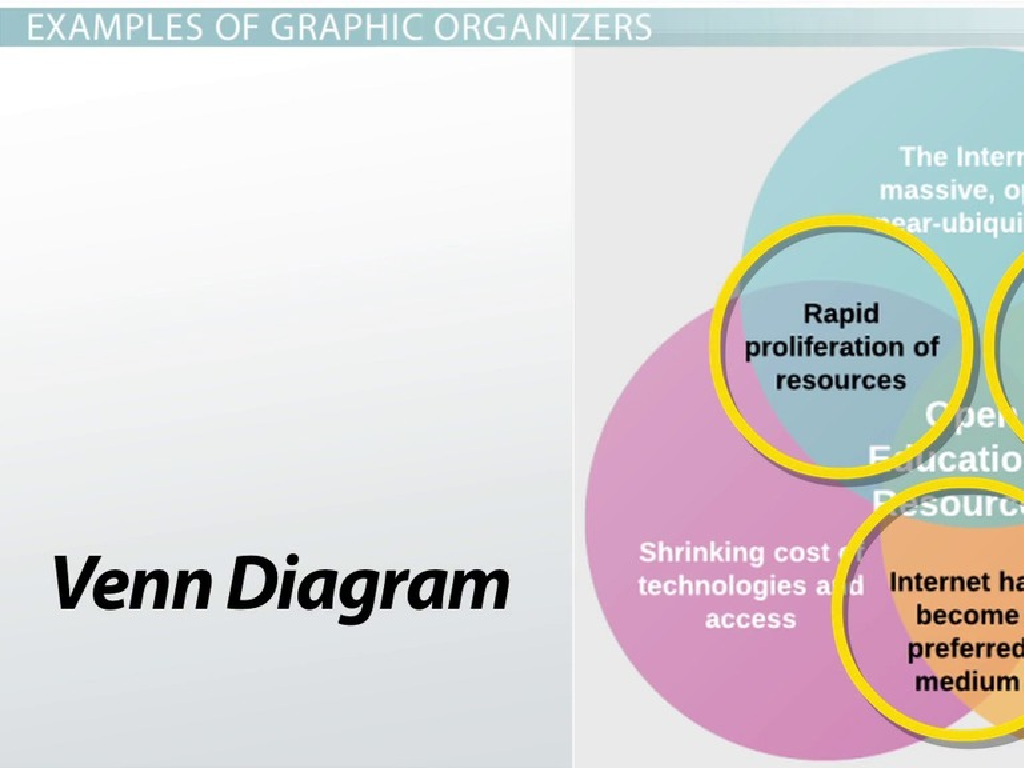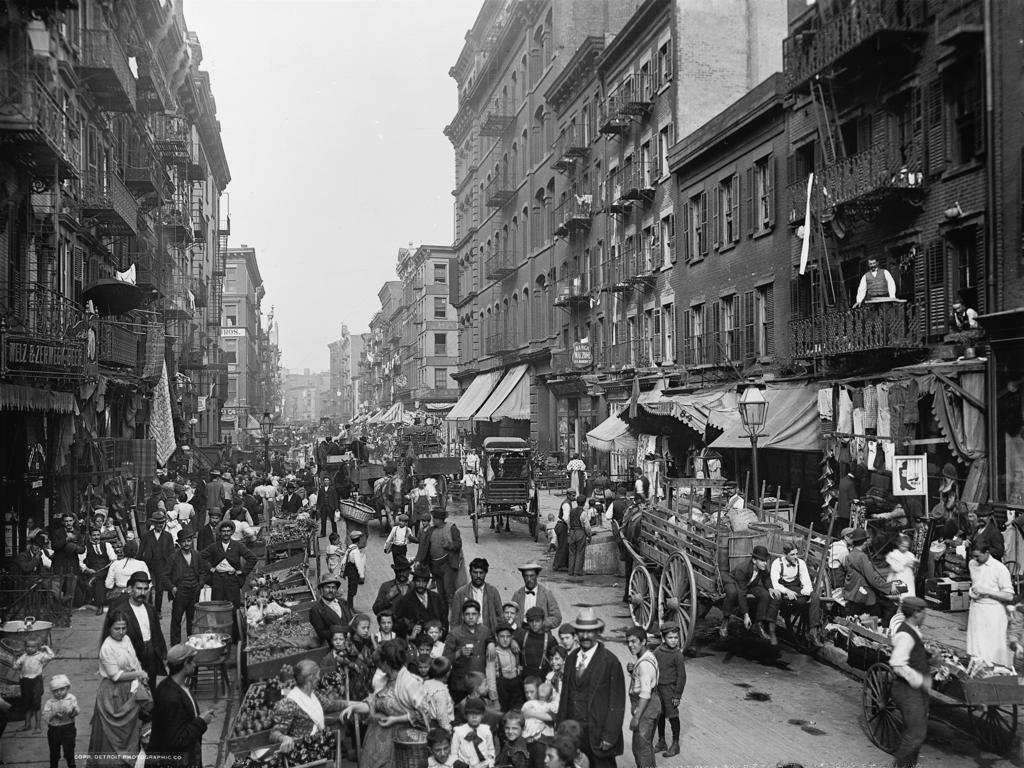Cities Of The West
Subject: Social studies
Grade: Fifth grade
Topic: Cities
Please LOG IN to download the presentation. Access is available to registered users only.
View More Content
Exploring Western Cities
– What defines a Western City?
– Geography, culture, and history shape them.
– Unique traits of Western Cities
– Architecture, economy, and landmarks.
– Historical significance
– How the past has influenced their growth.
– Modern-day Western Cities
– How these cities look and function today.
|
This slide introduces students to the concept of Western Cities, focusing on their defining characteristics and what sets them apart from other cities. Discuss the geographical location of these cities, typically found in the Western United States, and how the culture and history of the region have shaped their development. Highlight unique aspects such as architectural styles, economic drivers, and famous landmarks that students might recognize. Explain the historical context of these cities, including their growth during the expansion of the West. Conclude with a look at how these cities have evolved into the bustling metropolises they are today, with a nod to their historical roots. Encourage students to think of any Western cities they know or have visited.
Exploring Cities of the West
– What defines a city?
– A city is a large, densely populated area with complex systems.
– City vs. Town
– Cities are larger than towns and have more services and infrastructure.
– Key characteristics of cities
– Cities have busy centers, many buildings, and diverse job opportunities.
– Population and services
– Cities offer more services like schools, hospitals, and transportation.
|
This slide introduces students to the concept of a city and how it differs from a town. Emphasize the definition of a city as a large and densely populated area with complex structures and systems. Discuss the differences between cities and towns, focusing on size, governance, and available services. Highlight the characteristics of cities, such as their large populations, significant infrastructure like roads and public transport, and the services they provide, including education, healthcare, and recreational facilities. Use examples of cities in the West to illustrate these points, and encourage students to think of cities they’ve visited or heard about to make the information more relatable.
Geography of Western Cities
– Western cities on the U.S. map
– Locate cities like Los Angeles, Seattle on a map
– Physical geography of the West
– Mountains, deserts, and coastlines shape the land
– Geography’s role in city development
– Natural resources and terrain influenced growth and economy
|
This slide aims to help students understand the geographical context of cities in the Western United States. Start by showing where these cities are located on a map to give students a visual understanding of their positions. Discuss the diverse physical geography of the West, including its mountains, deserts, and extensive coastlines. Explain how these geographical features have influenced the development of cities, such as the availability of natural resources, the suitability for trade, and the appeal for settlement and tourism. Use specific examples like how the port cities have developed due to their access to the ocean for trade or how the presence of natural resources like forests and minerals has led to economic growth in certain areas.
Exploring the History of the Western United States
– Early history of the West
– Before settlers, indigenous peoples thrived for centuries.
– The Gold Rush’s role in cities
– The 1849 Gold Rush led to boomtowns, like San Francisco.
– Migration shaping the West
– People moved for jobs, land, and the ‘American Dream’.
– Settlement patterns over time
– Towns grew along railroads and water sources.
|
This slide provides a snapshot of the historical events that shaped the Western United States. Begin with a brief overview of the region’s history, emphasizing the rich cultures of indigenous peoples before European settlement. Highlight the Gold Rush of 1849 as a pivotal event that spurred rapid city development and population growth, transforming the West into a land of opportunity. Discuss the migration patterns, including the push and pull factors that led people to move westward, such as the promise of work and land ownership. Explain how the geography of the West influenced where people settled, with many towns developing along major transportation routes and waterways. Use maps to illustrate these patterns and encourage students to consider how history has shaped the modern landscape.
Economy of Western Cities
– Major industries in the West
– Tech, entertainment, and energy lead
– Tech’s role in San Francisco & Seattle
– Innovation hubs with global influence
– Agriculture and tourism’s impact
– Vital for jobs and local culture
– Diverse sectors fueling the economy
|
This slide aims to provide an overview of the economic landscape of cities in the Western United States. Focus on the dominant industries such as technology, which is prevalent in Silicon Valley and Seattle, and the entertainment industry in Los Angeles. Highlight the importance of agriculture in California’s Central Valley and the role of tourism in cities like Las Vegas. Discuss how these sectors contribute to the robustness and diversity of the Western economy. Encourage students to think about how different industries might be interconnected and how innovation drives economic growth. Use examples like the tech boom leading to more jobs in the service sector to illustrate these points.
Culture and Lifestyle in Western Cities
– Diversity in Western cities
– Many cultures live together, sharing traditions and languages.
– Urban vs. suburban lifestyles
– City centers are busy and crowded, while suburbs are quieter with more space.
– Festivals and cultural events
– Celebrations like parades and fairs show the city’s unique culture.
– Food, arts, and entertainment
– Try new foods, see plays, and visit museums to learn and have fun.
|
This slide aims to give students an understanding of the rich cultural tapestry that makes up the cities of the West. Emphasize the variety of cultures and how they contribute to the city’s identity through language, traditions, and community events. Discuss the differences between living in the heart of the city versus the suburbs, highlighting how lifestyle choices can vary. Introduce the concept of festivals and cultural events as a reflection of the community’s values and history. Lastly, touch on the role of food, arts, and entertainment as both a celebration of cultural heritage and a way to bring people together. Encourage students to think about their own experiences with cultural events and the diversity in their communities.
Challenges Facing Western Cities
– Urbanization impacts
– More people, more traffic, more pollution
– Natural disaster risks
– Earthquakes and wildfires are common
– Sustainable city efforts
– Planning cities for the future
– Resilience against challenges
– Preparing cities to withstand disasters
|
This slide addresses the various challenges that cities in the western regions face due to urbanization, such as increased congestion and pollution. It also highlights the natural disasters that are more prevalent in these areas, including earthquakes and wildfires. The content should emphasize the importance of sustainable development and the efforts being made to create cities that are resilient to these challenges. Discuss the concept of sustainability and resilience, providing examples of how some cities are implementing green spaces, improving public transportation, and enforcing stricter building codes to prepare for natural disasters. Encourage students to think about how these efforts can improve city life and protect the environment.
Famous Western Cities
– Los Angeles: Entertainment hub
– Home to Hollywood and major studios
– San Francisco: Iconic Golden Gate
– Known for the Golden Gate Bridge
– Seattle: Lush Emerald City
– Renowned for green spaces and coffee
– Denver: Elevated Mile High City
– Named for its altitude at 5,280 feet
|
This slide introduces students to some of the most famous cities in the Western United States, each with its unique nickname and claim to fame. Los Angeles is recognized globally for its film and entertainment industry, particularly Hollywood. San Francisco is iconic for its historic Golden Gate Bridge and picturesque bay. Seattle, often associated with its lush greenery and coffee culture, is nicknamed the Emerald City. Denver, situated at one mile above sea level, is known as the Mile High City. Encourage students to think about what makes these cities unique and how their geographical and cultural attributes contribute to their fame. Discuss the importance of these cities in the context of American culture and economy.
Class Activity: Create Your Western City!
– Form research groups
– Choose a Western city
– Design a city facts poster
– Include city history, landmarks, and fun facts
– Present your city
– Share what you’ve learned with the class
|
This activity is designed to encourage collaboration and research skills. Divide the class into small groups, each selecting a different city in the Western United States to explore. They will create a poster that includes key information such as the city’s history, important landmarks, population, cultural significance, and other interesting trivia. Encourage creativity in the presentation of their posters. Possible cities to research could include Los Angeles, San Francisco, Seattle, Denver, or Las Vegas. Provide resources such as books, articles, and access to the internet for their research. Each group will present their findings to the class, practicing public speaking and sharing knowledge. The teacher should facilitate the group formation and city selection process, ensuring a diverse range of cities is covered.





